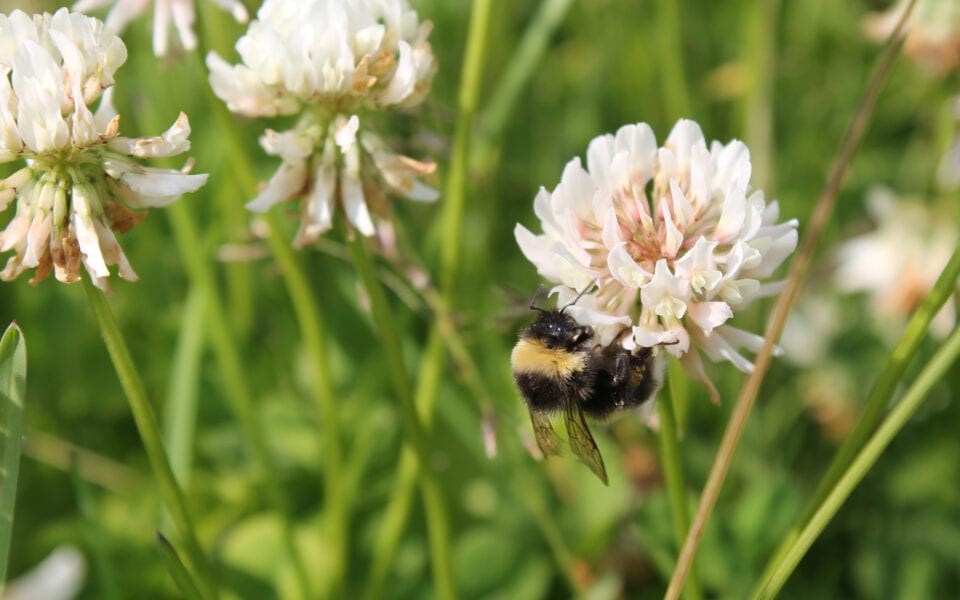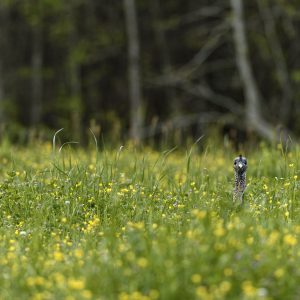Simply stated, no pollinators, no pollination, no food. All human life and the life of the wildlife that we pursue are highly dependent upon the success and propagation of plants that enhance and support our pollinators and their vital role. Chances are many of your plots are dependent upon pollinators. It only makes sense to intentionally plant for them – having more pollinators present amidst your plots will increase plant productivity.
The Unites States is blessed with abundant and rich farmland that produces more food than we can even consume. According to the United Stated Department of Agriculture, about 35% of the world’s food and 75% of the world’s flowering plants rely on pollinators to reproduce. Over the past decade there has been a sharp decline in the number of pollinators, primarily the honeybee, because of various natural and man-made threats. Every effort that gamekeepers can make to create or improve upon feeding options for pollinators is a win-win for everyone.
When creating a plan to plant for pollinators you should first consider the size of and overall usability of the property you are tending. While your primary food plots will likely dominate your planting, you can also make efforts to use areas that are currently not in use when planting for pollinators. Steep locations, fence rows, field edges and corners can all be utilized to create pollinator havens. Also consider the fact that pollinators need nectar during the spring, summer and fall. If at all possible, plant your plots in a fashion so pollinator needs are met for all seasons.
As you create your plan, consider the amount and size of perennial and annual plots. Common perennials are clover, alfalfa, fruit trees and berry bushes. These plants, once established, will provide sustenance for your wildlife, but also pollen and nectar for pollinators for at least a few years. Fruit trees will of course provide for many years. Your common annual plants that are excellent for pollinators include corn, wildflowers and soybeans.
Planting Corn for Pollinators
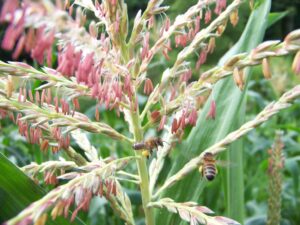 Planting a stand of any type of corn for wildlife will provide pollinators with an abundance of mid to late-season pollen. When corn silks appear and the tassel matures, pollinators of all types will swarm the area in a loud chorus while they collect pollen. As the bees fly from stalk to stalk, small particles of pollen fall onto the corn silks which begins the creation of each grain of corn. Corn will provide a vast amount of food for bees for about seven to ten days. Alternating planting dates of corn plots will create feeding options for a longer period of time as the plots mature at different dates.
Planting a stand of any type of corn for wildlife will provide pollinators with an abundance of mid to late-season pollen. When corn silks appear and the tassel matures, pollinators of all types will swarm the area in a loud chorus while they collect pollen. As the bees fly from stalk to stalk, small particles of pollen fall onto the corn silks which begins the creation of each grain of corn. Corn will provide a vast amount of food for bees for about seven to ten days. Alternating planting dates of corn plots will create feeding options for a longer period of time as the plots mature at different dates.
Planting Clover for Pollinators
The tried and true plot of clover can become a pollinator hotspot once the flowers have developed. Depending on the density of the deer herd and other wildlife that frequent clover fields, planting a plot large enough to prevent overgrazing is important since this will inhibit the development of the clover bud.
No matter if you are planting white or red clover, once it blooms your plot will be swarming with pollinators. Like any vegetation, clover is most tender when it’s young and experiencing rapid growth. When possible, you should allow your clover to reach a point of maturity where the buds can provide for the pollinators. Once the blooms have died you can mow/trim the clover if needed and then the plants will again produce tender growth and blooms. Bloom production will occur in a healthy plot until fall or first frost.
Planting Fruit Trees for Pollinators
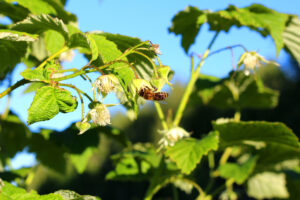
Irina Petrova
Aside from your traditional perennial and annual crops, gamekeepers should also consider the addition of fruit trees to their land to enhance pollinator feeding options. Fruit trees can make a lasting impact on pollinators since they will live many years and bloom every spring, and their fruit will provide for your wildlife in the fall.
Immediately after winter’s grip finally releases each region of the country, pollinators begin the lifelong job of searching for nectar and pollinating flowering plants. Fruit trees such as apple, pear, plum, cherry, crabapple and peach can provide some of the earliest nourishment for pollinators. The early blossoms can be the key to giving local hives the kickstart they need to again pollinate the plants in your area. Having a variety of fruit trees can be beneficial as some flower earlier than others and some flower later which allows a longer window of opportunity for pollinators.
Fruit trees should be planted in areas of full sun and will even develop and produce well on ridgetop locations when planted in clearings. Steep areas that are not suitable for annual agricultural tilling are also locations to consider for fruit trees.
Make sure to choose fruit trees that will pollinate one another in order to ensure fruit development. No matter the season when you plant your trees, you must give great attention to the fact that they need to be watered during the first several months after being planted. An annual application of fertilizer is also recommended.
Creating the best food and cover for wildlife on your piece of property is no doubt a goal of yours. Food sources for your wildlife, or pollen sources for your pollinators, are not always fields of pristine crops. Even adding blackberry and raspberry plants to create thickets for small game can also provide blooms for pollinators. Protecting areas where such berry producing plants naturally occur can be a cost-effective way to enhance feeding for pollinators.
Planting Wildflowers for Pollinators
While many gamekeepers may not consider themselves a “flower gardener,” the addition of wildflower fields to your property can add aesthetic beauty and overall attractiveness and food for pollinators. Field edges, the ends of plots, fence rows and hard to access pieces of property can be put to good use when wildflowers are added to your property.
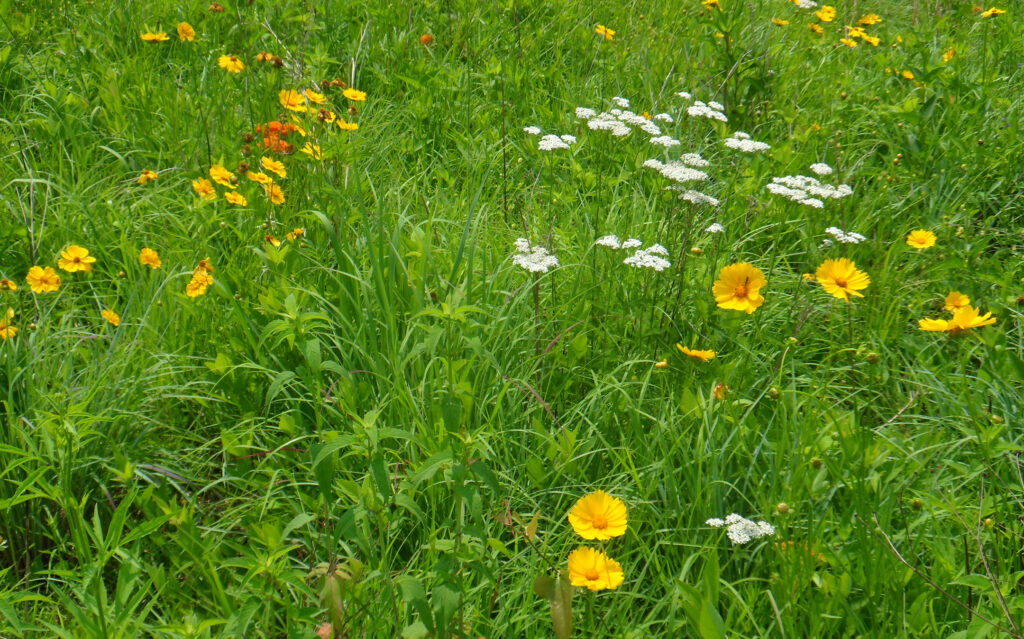
Mossy Oak Nativ Nurseries offers several individual varieties of flowers that can be sown. The addition of wildflower plots does not require a lot of extra attention. In fact, once the plots are properly developed, they are quite self-sustaining, and some varieties will reseed and reappear the following year.
To witness the draw that your plots have on pollinators you should visit the site early in the morning or late evening as most pollination occurs during those times of day. Like all land improvements, planting for pollinators does not have to occur all at once or during one season. As we plan to make big improvements in the land that we tend, let’s take care of the little things as well and plant for the pollinators.

